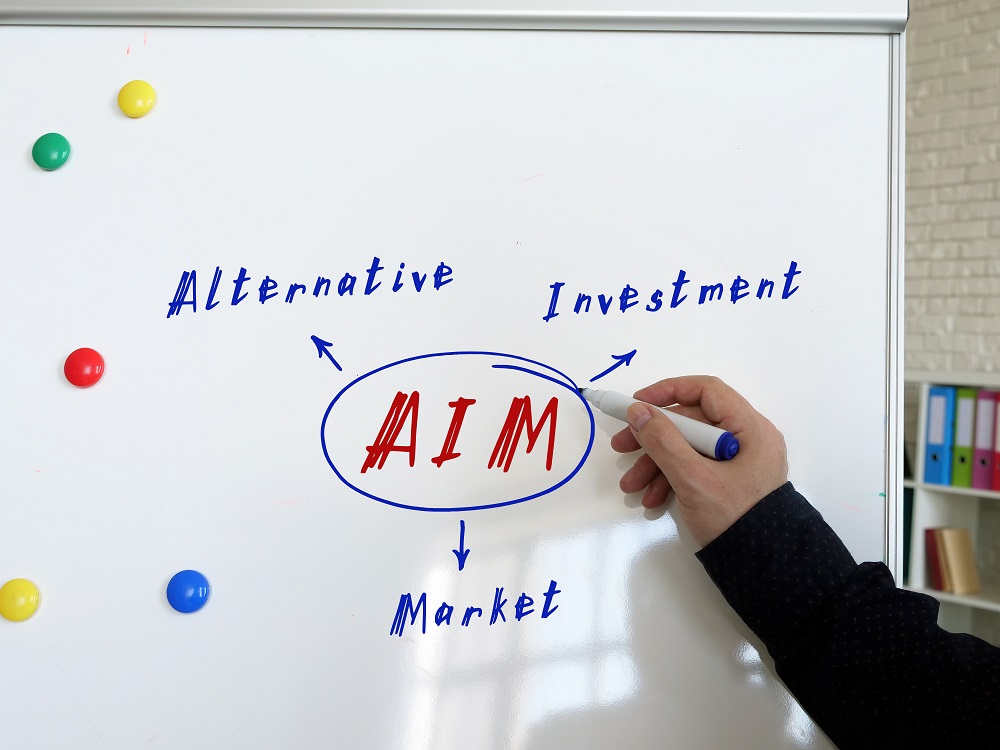One year on from the collapse of Lehman Brothers, which plunged global stock markets into turmoil, international equity indices may at last be basking in the glow of recent rallies. However, overall, the past 12 months have remained highly challenging for AIM companies, in both trading and market valuation terms, no doubt testing the patience of the institutions that invest in them.
And yet, according to the findings of Growth Company Investor’s latest research report – Institutional Investors in AIM 2009 – the influence of these larger investment houses, groups and brands over AIM has increased.
Firstly, let’s have a recap. Back in 2003, our maiden assessment of AIM’s institutional investors examined the declared holdings of 702 ventures, collectively valued at £14.6 billion. In the ensuing bull market years, those figures burgeoned substantially to 1,688 companies worth £119 billion by the time of our 2007 review, reflecting the increase in the market’s scale and increasingly international scope. Subsequent heavy stock market falls led to a dramatic decline in value to £78.1 billion last year, with the rapid rise in company numbers on AIM halted with a decline to 1,624.
Our seventh report, of which this feature forms but a part, reveals a near-15 per cent decline in company numbers to 1,386, in the wake of the delisting trend that has marked 2009 as well as the freezing of the IPO pipeline. On the date our statistics were taken (see notes), the value of AIM had declined by a further 38 per cent to £48.1 billion, reflecting the bear market conditions for much of the period under review.
Despite this short-term retrenchment, it is important to keep recent declines in some context – the overall value of AIM has still grown more than threefold since our analysis into the topic began, while the number of companies has doubled.
Strong support for secondary funding
Proof that the AIM IPO market first slowed and then shut is the fact that a meagre £308.9 million has been raised in the opening months of 2009 up until July, compared with the staggering £9.9 billion that was attracted for new issues in the 2006 calendar year.
Encouragingly for growth companies, however, cash available for secondary funding, the bulk coming from institutions, has held up rather well. A not insignificant £2.3 billion was raised in the opening seven months of this year, which compares with £3.2 billion pulled in via secondary issues in the whole of 2008.
Admittedly, this was well down on the £9.6 billion filtering into secondary rounds in 2007, but it shows that institutions are clearly still prepared to pump money into existing AIM companies they know and trust in further funding rounds, despite recent equity market tumult.
Institutions standing firm
Institutional investors have not only upheld their commitment to AIM – a market regarded as higher risk than the Main Board – their influence has marginally increased year-on-year.Collectively, they now control £24.1 billion of AIM assets. Although this value has declined from £39 billion last year, a decrease of 38.2 per cent, the proportion of assets held by institutions has increased slightly from 50 to 50.2 per cent. This may be lower than the 56.7 per cent peak figure controlled in 2006, at which point AIM’s market value was far higher at £42.9 billion, but it demonstrates that, despite the inclement sentiment surrounding smaller companies, institutions remain committed AIM investors.
Most active players
Our list of most influential institutions by investment value (see Table 1) is headed up once again by BlackRock, the product of the earlier merger between fund management giants BlackRock and Merrill Lynch Investment Managers, now 49 per cent owned by Bank of America. However, the value of the assets it controls has declined to £772 million (2008: £1.46 billion), as the number of companies invested in has declined from 162 to 107. Nevertheless, BlackRock remains a hugely influential investor in a diverse number of companies, ranging from investment bank Numis Corporation to qualifications star Education Development International and from energy support services group Cape to acquisitive car dealership group Vertu Motors.
Furthermore, this institution still controls £97 million more assets than the next in our list, Invesco, the investment management giant holding sway over £675 million worth of AIM assets, including stakes in body armour specialist Shieldtech, mobile phone services venture WIN and high-performance antenna maker Sarantel.
For the second year in succession, the number and value of Invesco’s AIM investments has reversed, this time from 80 to 69 in terms of individual investments and with value declining by 30 per cent from last year’s £970 million.
Jostling for position
Highly noticeable in addition is the surge up both the investment value and investment number tables of Lloyds Banking Group, following the January 2009 takeover of HBOS by Lloyds TSB. Through the enlarged group’s various investment arms, Lloyds owns £427 million of AIM assets via 82 separate investments. Last year, as distinct banks, HBOS and Lloyds TSB accounted for £324 million and £190 million of value through 44 and 29 investments respectively.
Another large institutional player making a move up the value table is Prudential, the owner of fund manager M&G now occupying third spot, up from eighth position a year ago. Its rise has occurred despite a slight decline in the value of investments from £444 million to £432 million.
Fidelity International has retained its fifth position in the value table and is fourth in the most active by number table, with the volume of shareholdings having reduced from 131 to 97.
Notable fallers in the table include Artemis Investment Management, which has seen the value of its investments decline from £704 million to £274 million (investment numbers are down from 138 to 93).
Habitual AIM backers
After stripping out nominee accounts – which collectively contain over £2.9 billion worth of AIM company stakes – BlackRock again ranks highest amid the most active institutions by number of investments (Table 2), having backed 107 AIM companies (2008: 162).
However, in a marked development, many of the serial AIM backers appear to have sold out of a number of positions. These include AXA, whose 138 investments have dropped to 101, Artemis, with a reduction from 138 to 93 and Gartmore, with a reduction from 110 to 97. Heading in the opposite direction are Henderson, with a rise from 67 to 98 separate investments, and F&C, now with 90 interests, up from 88 a year ago.
Sectors subdued
Unsurprisingly, the value and number of investments within all the leading sector categories (see Figure 1) declined once again. Taking over from oil and gas producers as the sector with the highest value of investments is mining, despite the value having waned from £5.8 billion to £4 billion, with the number of companies reduced from 869 to 712.
The valuation decline primarily reflects the effects of the recession on commodity prices and, subsequently, share prices, while the lack of new issues, following an earlier glut, and the delisting trend have come into play. Mining occupies prime position by virtue of a steeper value decline among oil and gas producers, where value has retrenched from £5.8 billion to £2.8 billion, a reduction of 52 per cent, with the number of companies reducing from 515 to 477. The credit-crunched real estate sector has again struggled to attract positive sentiment from investors and its collective value has dropped further still, from £4.6 billion to £2.6 billion.
Sectors highly sensitive to the economic cycle have suffered, notably media, where value has dropped from £1.2 billion to £721 million. Conversely, valuation gains were posted by defensive market sectors such as food producers, where value increased from £753 million to £814 million, reflecting a higher number of companies, and health care equipment and services, where a £186 million, or 75 per cent, valuation gain was recorded.
The lower echelons
Examining different market cap strata at the smaller end of AIM, within the sub-£5 million bracket, RAB Capital retains its leading position. This likely reflects the period’s prevailing market turbulence, which drove the market value of many of the companies in which it invests below the £5 million barrier. RAB Capital now has an interest in 18 businesses (Van Dieman Mines, Triple Plate Junction, Gem Biofuels and Pan Pacific Aggregates among them) within this band, collectively capitalised at £7.49 million, up from 11 companies worth £5.55 million a year ago.
F&C is also well placed here, with the value of its holdings having risen to £6.3 million from £4.6 million, despite the number of companies falling from 23 to 18. Its name is found on shareholder registers at businesses as diverse as car valeting outsourcer Autoclenz, business improvement specialist eg Solutions and Serabi Mining.Notable newcomers this time around are Barclays, with £6.5 million of investment from 40 businesses, up from 22 companies worth £3.9 million last year, and the Evolution Group, now holding sway over a larger £5.1 million of sub-£5 million companies.
Of course, it must be pointed out that an increased presence in this space will ultimately reflect falling stock prices of the companies in which these institutions have invested and many fund managers have been unable to exit from some lowly positions. Accordingly, the figures for most active investor reveal increases in the number of investments now falling into the sub-£5 million strata. Barclays now holds investments in 40 companies, up from 22 a year ago, Evolution in 23 ventures, a significant rise on last year’s nine companies, and Gartmore now has 23, compared with 13 last year.






